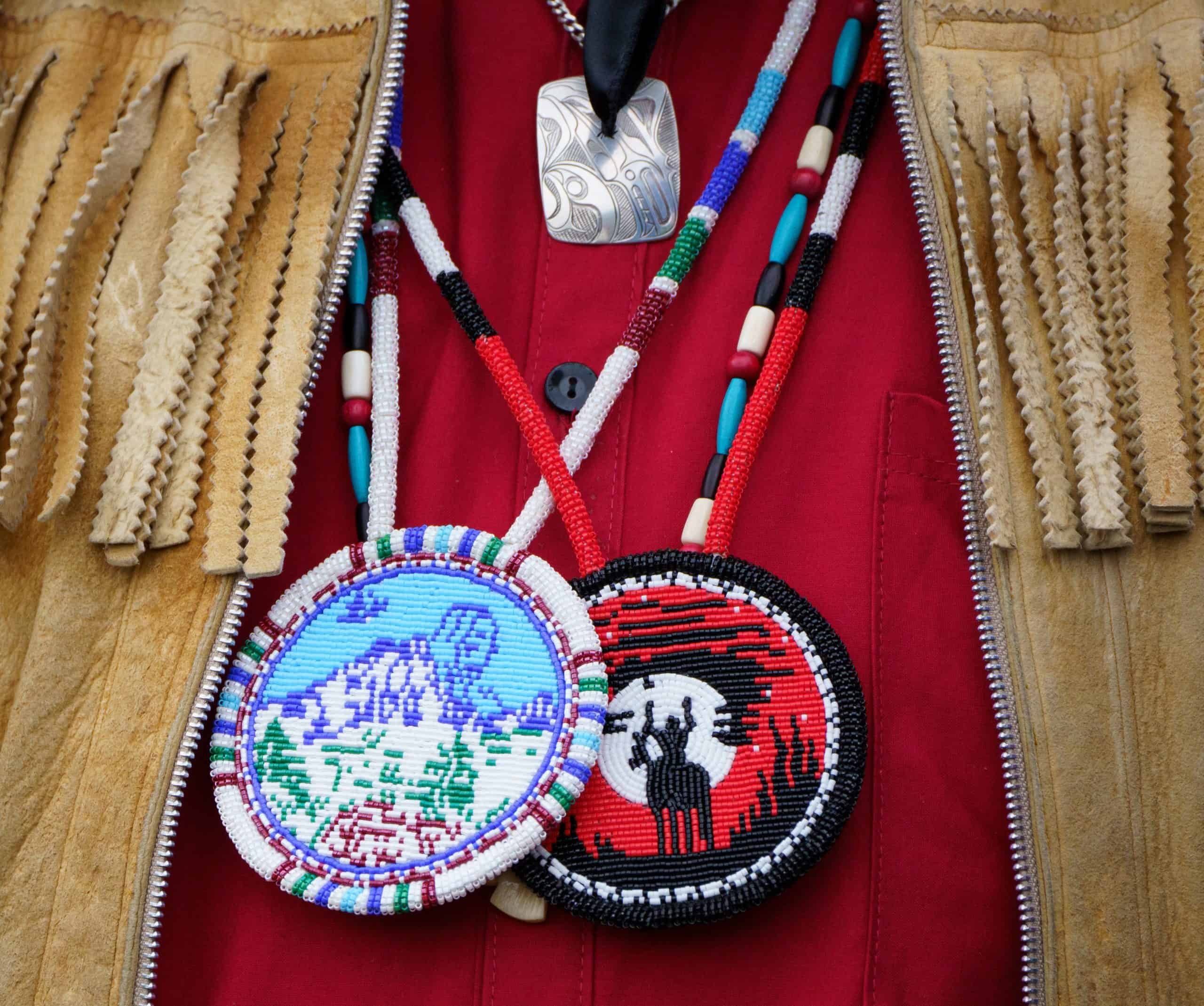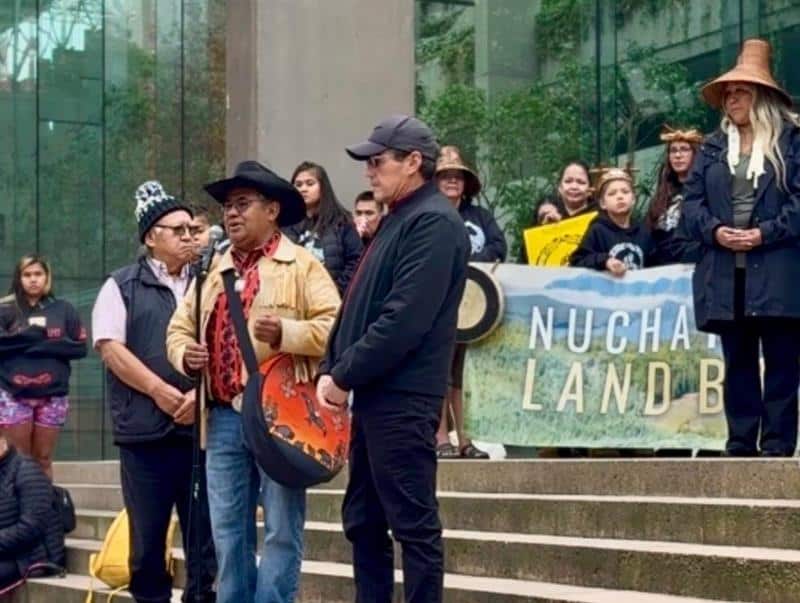VANCOUVER ʹStrengthening support and capacity for the Tsilhqot’ National Government and its communities to be true partners and leaders in emergency management is the foundation of the renewed five-year tripartite Collaborative Emergency Management Agreement (CEMA).
The agreement enables the Tsilhqot’ National Government and the governments of British Columbia and Canada to build on successes from the 2018 agreement while advancing reconciliation through the development of a respect-based, government-to-government framework for emergency and wildfire management.
The CEMA will create a structure for collaboration to ensure that Nations are at the table and informing decisions that affect them, their families and their territories while prioritizing the importance of cultural safety and Indigenous knowledge in wildfire and emergency management.
The agreement identifies and supports the implementation of policies and protocols to allow seamless and effective emergency management across all orders of government, including Indigenous, federal, provincial, regional and municipal governments. It also commits the parties to jointly explore and develop a proposal for an Indigenous-led regional emergency centre, a training facility and evacuation centres.
The three governments are committing to co-develop and collaboratively implement strategies to enhance the role and capacity of Tsilhqot’ peoples in emergency management, including a review of infrastructure, operational requirements and other capacity needs.
With the signing of this agreement, the governments of British Columbia and Canada bring forward a renewed determination to deliver emergency services with Indigenous Peoples in a way that is culturally safe, efficient and effective.
The agreement reflects the common goal of the three governments to build trust and relationships in the spirit of the United Nations Declaration on the Rights of Indigenous Peoples (UNDRIP).
Over the past five years, the parties have made progress related to establishing government-togovernment agreements and protocols that provide a progressive framework for:
- emergency response;
- enhancing community capacity funding;
- improving financial reimbursement processes; and
- continuing to seek solutions to medium- and long-range infrastructure investments, such
as fire halls.
From February 2017 to February 2022, Indigenous Services Canada (ISC) contributed $1.3 million to implement the agreement. With the signing of the new agreement, Canada has committed to ensuring this funding continues with $250,000 per year over five years. Additionally, ISC will provide $225,000 through its First Nation Infrastructure Fund to support the dƒilhqot͛in National Government and dƒilhqot͛in communities in emergency management community planning.
Since 2019, the Province, through the Community Emergency Preparedness Fund, has granted the dƒilhqot͛in National Government more than $836,000 to advance emergency support services, emergency operations centres and firefighting priorities. This year, Emergency Management BC provided an additional $280,000 to further priorities set under the Collaborative Emergency Management Agreement.
The work done with the Tsilhqot’ National Government and Tsilhqot’ communities is intended to inform work with other Indigenous governments and communities, as well as the broader commitment to improve overall emergency management in B.C. and throughout the country.
Quick Facts:
- The Tsilhqot’in territory covers 6.65 million hectares (approximately 16 million acres) of land between the Fraser River and the Coast Mountains in west-central B.C.
- The Tsilhqot’in National Government consists of the Tsilhqot’in communities of Tl’etinqox (Anaham), ?Esdilagh (Alexandria), Yunesit’in (Stone), Tsi Deldel (Alexis Creek/Redstone), Tl’esqox (Toosey) and Xeni Gwet’in (Nemiah).
- The first-ever Collaborative Emergency Management Agreement was created with the Tsilhqot’in National Government, the Province and the federal government in 2018 following the catastrophic 2017 fire season in the B.C. Interior.
- Canada and British Columbia are working with First Nation partners to develop a provincewide tripartite approach to emergency management that recognizes First Nations as full partners.
- Emergency Management BC is co-developing modernized emergency management legislation with Indigenous partners to ensure a new act supports more effective emergency management and aligns with the principles of UNDR
Learn More:
Collective Emergency Management Agreement: https://www.tsilhqotin.ca/wpcontent/uploads/2022/07/2022_Collaborative_Emergency_Management_Agreement.pdf
Tsilhqot’in National Government: https://www.tsilhqotin.ca/
For information about BC Wildfire Service͛s Cultural and Prescribed Fire Program, visit:
https://prescribedfire.ca/
A backgrounder follows.
“With the reality of the climate crisis, we move from one disaster to another. The renewal of
this agreement today works to address issues of the past while breaking trail for a future of
continually improving emergency services. We are encouraged to see the commitment by our
partners to make progress on our infrastructure priorities, specifically toward the much-needed
regional emergency centre our people have been asking for. As Tsilhqot’ people, we live in
very remote areas with no cell coverage and very few emergency services. This groundbreaking
agreement allows us to build up our own capacity and resources to manage emergencies on
the land and in the communities. We are dealing with an area twice the size of Vancouver
Island, and the Tsilhqot’ people, and all people in this area, need to know they have effective
access to emergency services. The renewal of this agreement hopes to accomplish that.”
— Chief Joe Alphonse, dƒilhqot͛in National Government ʹ
“As climate change spurs on increasingly intense and frequent wildfires, the Government of
Canada will continue to work with Indigenous leaders, provinces and territories to keep people
safe and prepare for future events. With their Traditional Knowledge of the land and culture,
First Nation leaders and organizations must be at the forefront of emergency management.
Renewing this agreement and partnership with the Tsilhqot’ Nation and the Government of
British Columbia is a step forward not just for reconciliation, but for our collective safety and
shared environment.”
— Patty Hajdu, federal Minister of Indigenous Services ʹ
“For Canada to succeed, we need our rural, remote and Indigenous communities to thrive. This includes ensuring that Indigenous communities have the emergency services and infrastructure they need. Today’s collaborative emergency management agreement will ensure the Tsilhqot’ in National Government are true partners and leaders in emergency management while highlighting and advancing the strengths, expertise and opportunities within Tsilhqot’in communities to inform and support wildfire and emergency management”
— Gudie Hutchings, federal Minister of Rural Economic Development ʹ
“This agreement is a demonstration of our renewed commitment to work side by side with Indigenous communities to better support their emergency management needs and contribute
to our larger commitment to strengthen overall emergency management in the province. We look forward to continuing to work with the Tsilhqot’ Nation as true partners and leaders in emergency management.”
— Mike Farnworth, B.C.͛s Minister of Public Safety and Solicitor General
“As part of building a better British Columbia and upholding Indigenous rights, we are committed to developing a recognition-based emergency management structure in partnership
with Indigenous Peoples and Canada. Creating new standards for Indigenous-led emergency management and collaborative community resilience is no easy task, and the only way we will make progress is through partnerships like this one. I look forward to building on our successes and strengthening our relationships for years to come.”
— Murray Rankin, B.C.͛s Minister of Indigenous Relations and Reconciliation
“Floods, landslides and wildfires have had a devastating impact on our province; Indigenous
communities are often among the hardest hit. Working in partnership with Tsilhqot’ Nation and its communities on this agreement moves us all forward in ensuring emergency service
delivery is inclusive, culturally aligned and respects Indigenous knowledge.”
— Murray Rankin, B.C.͛s Minister of Indigenous Relations and Reconciliation
Contacts:
Emergency Management BC
Media Relations
250 880-6430
Alison Murphy
Press Secretary
Office of the Honourable Patty Hajdu
Minister of Indigenous Services
Alison.Murphy@sac-isc.gc.ca
Media Relations
Indigenous Services Canada
819-953-1160
media@sac-isc.gc.ca
dƒilhqot͛in National Government
Myanna Desaulniers
Communications Manager
250 305-7885
November 6, 2025 — Williams Lake, BC Tŝilhqot’in Call for End to Political Fear-mongering About
October 20, 2025 — Williams Lake, BC Tŝilhqot’in Stand with Nuchatlaht First Nation at Historic

